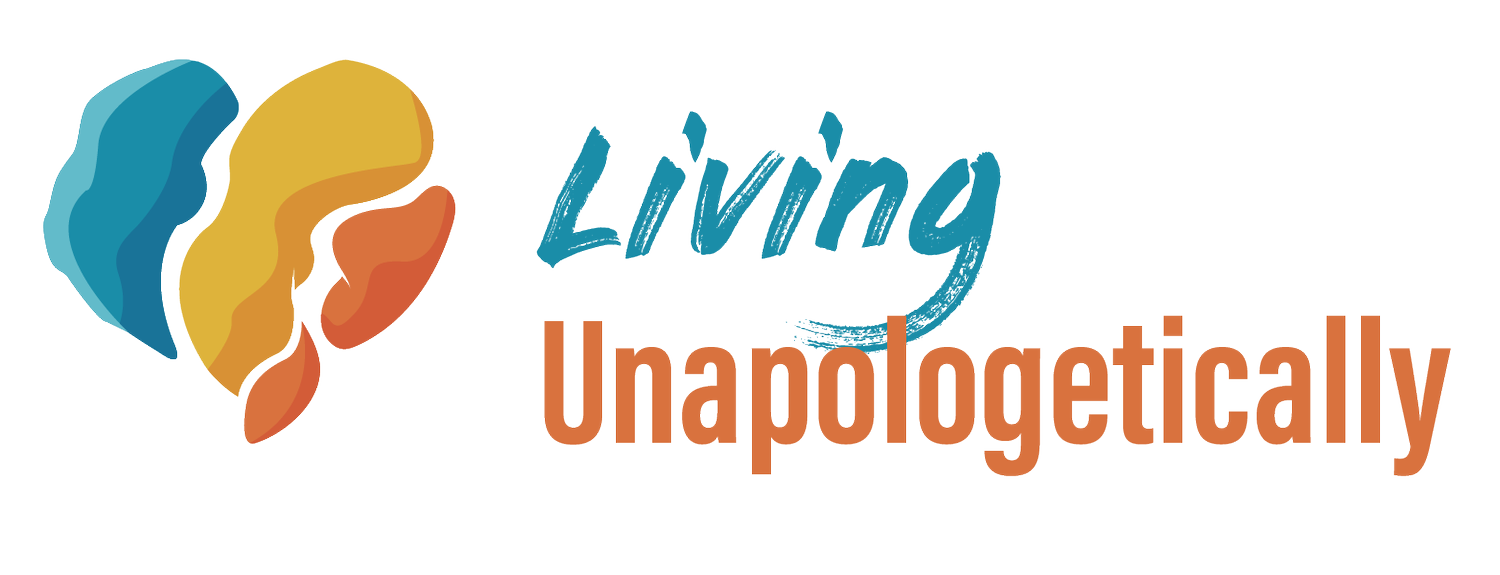5 Strategies to Evolve Your Leadership Role in an Era of Accountability
"We all can't be quarterbacks!" The comparison between CEOs and quarterbacks is uncanny: both roles demand agile decision-making and effective leadership. However, many white executives indirectly or deliberately distance themselves from this role, creating a leadership vacuum in their organizations. Dr. Wendy Ashley succinctly put it in a recent episode of the Living Out Loud Discussion Series, "Everybody can’t be the quarterback. No. We can't all be the quarterback. And that is not DEI." This sentiment strikes at the core of a current challenge many organizations face, led by white executives: leading from a distance.
I connected with this metaphor as soon as I heard her say it. It makes so much sense. The quarterback is a critical player on a team, responsible for progressive movement and scoring. But what happens when that person decides to dodge their responsibility instead of moving fully into their role? The lack of perceived leadership can often create feelings of betrayal, abandonment, and loneliness amongst the team members.
This is literally what happens in organizations when leaders don’t want to lead when having to connect more deeply to DEI efforts. As with most things, there are lots of reasons for this common experience. And the good news is, there are also helpful ways to deal with it. Read on for a healthy dose of validation and tips to move into action.
Power + Fear: Analyzing the Root Cause
One of the main culprits behind leadership avoidance behavior is fear. I have facilitated countless learning experiences and continue to hear professionals across industries and positions report fear as the number one emotion that gets in the way of action. This is especially true for well-intentioned white leaders who withdraw and disconnect when they feel uncomfortable or activated. This creates a noticeable gap in their leadership, often leading to a lack of communication, reaction, and decision-making.
Studies have shown that the fear of misuse of power can lead to freezing, where leaders are hesitant to act due to fear of criticism or making mistakes. This avoidance behavior is deeply rooted in psychological fear responses, where the potential for negative outcomes significantly outweighs the decision-making process. Factors such as loss aversion, social identity concerns, and the lack of psychological safety all play a role in amplifying these fears.
The fear of not wanting to do anything wrong or appear racist often trumps the need to make tough decisions. The anxiety of incompetence or not knowing everything creates immense tension in the minds of leaders. The reluctance to hold boundaries and accountability for DEI work hinders their ability to effectively lead. I’m in no way excusing inaction. My hope is by normalizing common emotions, we can remove the hold they have over us.
Social and Cultural Pressures
We are in an era characterized by instant communication and social media which amplifies the fear of public scrutiny. Leaders are more cautious than ever, fearing that any misstep will be seen and criticized. This fear is particularly acute in sensitive areas such as racial dynamics and DEI initiatives. Our partners are talking more and more about cancel culture. It’s truly become an added layer of complexity to the leadership landscape.
Cancel culture: the practice of withdrawing support for public figures or companies after they have done or said something considered objectionable or offensive, heightens the stakes for leaders.
This fear of public condemnation not only exacerbates leaders freezing, but also contributes to a risk-averse mindset where the avoidance of negative outcomes becomes a driving force behind decision-making processes. People navigating these dynamics must balance the power of decisive action with the potential for public scrutiny. It’s the reality we live in. And even with these things being true, it is also true that the privilege to choose inaction is literally the behavioral patterns DEI work seeks to disrupt.
Developing strategies to manage the psychological impact of cancel culture and opening ourselves up to the opinions of others is a necessary part of leadership. I’d venture to say it’s our responsibility. It’s also our responsibility to get more in touch with our emotions and what’s happening in our bodies so we become responsive leaders who are equipped to create healthy, safe work environments.
If any of the things I just described are resonating with you, then keep reading because I highly recommend the strategies below.
1. Work WITH your nervous system.
Dr. Ashley dropped some gems in our recent conversation about how the role the nervous system plays is crucial while navigating tricky leadership dynamics. I love how she likened it to the way a car alarm operates, warning us whenever there's a possible threat. However, like a car alarm, sometimes it goes off even when there's no threat just from the perception of it, mimicking a 'false alarm.' This tends to happen when people feel threatened or cornered,activating their fight, flight, freeze, or fawn response.
Learning to work with your nervous system's spirals is a bridge to self-regulation. The art of self-soothing and remaining present in the moment can work wonders and is applicable to our work in countless ways. As leaders, we can benefit from developing ourselves to pause, reflect, and prioritize responding over reacting. Managing these responses requires awareness and deliberate practice.
2. Spend time learning your behavioral defaults in your interactions.
Dr. Allen Lipscomb is another person who is full of wisdom and graciously shared his lens on understanding our responses to interpersonal interactions in a recent episode of the Living Out Loud Discussion Series. He and Dr. Ashley are close friends and colleagues; it’s no wonder their powerful contributions work so well together for learning that can be transformative, if you allow it.
Allen noted how real change occurs when we take what we learn and put it into practice in our daily exchanges, whether through conversation, text, email, etc. These lift up opportunities for us to see patterns in our behaviors and involve self-reflection to recognize personal biases and a deliberate effort to engage constructively.
3. Explore options to engage in mind-body practices.
Some people will love this. Some will hate it. If you told me to do this several years ago, I would’ve laughed. I heard about the benefits and research (blah blah blah) and still convinced myself they weren’t for me. I now understand I had an aversion to anything that made me be present, which had nothing to do with the effectiveness of mind-body practices and everything to do with my desire to NOT deal with what was inside of me.
It is now a major part of what we bring to our work with our partners at Living Unapologetically. As leaders, being able to be in our bodies and know what’s happening can bring about beautiful change in our organizations. There is a vast world of embodiment pathways. I encourage you to explore what’s out there. Once you find something that works for you, it can you become more aware of your thoughts and feelings without becoming overwhelmed by them.
TIP: Living Unapologetically offers guided meditations that can help leaders self-regulate, stay present, and make more grounded decisions.
4. Find and USE tools that work for YOU.
You can find 974974097 tools on the internet these days. There’s no shortage and honestly, it can feel overwhelming. It’s ok to engage in trial and effort until you find some that work for you. The point of finding tools is to be able to use them in the moments you need them. I personally feel like the method Dr. Lipscomb shared can be just the thing you need as a leader when you find yourself having a reaction in the moment at work. It’s called the PAUSE method.
Ponder: Reflect on your initial thoughts, feelings, and reactions, being honest with yourself about your response to an event or communication.
Ask Yourself: Consider what steps you need to take before responding to ensure that your reaction is measured and thoughtful, rather than impulsive.
Understand: Seek perspectives outside your immediate circle to avoid confirmation bias and gain a clearer, more balanced view.
Sensitive: Be mindful of your need for time to process and respond thoughtfully. The amount of time needed can vary greatly from one person to another, but it's crucial to allow yourself enough time until the issue doesn't feel immediate.
Execute: Develop a plan for your response that aligns with DEI values, ensuring it is considerate, non-reactive, and does not inadvertently marginalize or trivialize others.
5. Normalize not knowing everything and asking for help.
Vulnerability in leadership involves the willingness to admit uncertainty or mistakes, openly discuss challenges, and seek input from others. This approach challenges the traditional belief of the all-knowing leader, instead highlighting the strength in owning our limitations. It signals to team members that it's safe to share ideas, express concerns, and admit errors, which can lead to innovative solutions and a stronger, more cohesive team dynamic.
When asking for help, be clear about what you're seeking, whether it's advice, feedback, or hands-on assistance. Clarity helps team members understand how they can contribute effectively. By demonstrating openness to feedback, recognizing the contributions of others, and providing support when needed, leaders can cultivate a team atmosphere where mutual respect and support thrive. Embracing the quarterback role doesn't mean having all the answers. Allowing yourself the space to ask for help and pause when needed is very helpful. A good leader does not need to know or do everything but needs to cater to the team's needs as best as they can.
Leaders in today's work environments are being called to do more than just acknowledge diversity, equity, and inclusion (DEI) principles; they are being required to take action, courageous participation like a quarterback in a football game. Don’t be halted by the grip of fear and pressures of societal scrutiny. You can employ practical strategies like the PAUSE method, engage with your nervous system, and normalize the quest for help and continuous learning. This not only enriches your personal growth but also cultivates a more safe and healthy organizational culture. True leadership is demonstrated through the willingness to confront difficulties, adapt, and implement DEI principles in every facet of interaction and decision-making, ensuring that every team member, regardless of their background, can thrive.
What are your thoughts on ways your leadership can evolve? Share your experiences or questions in the comments below.
Interested in developing the areas that are hard to do on your own as a leader? Contact us!
Charmaine is a Relational DEI expert who sits at the intersection of thinking, feeling, and doing. She is an author, facilitator, skill builder, safe-space holder, family member, partner, and friend. And in all of those, her DEI lens is in constant use. Charmaine uses a social justice lens to help clients explore their individual and organizational needs amidst the backdrop of power, privilege, and oppression. You can access her book (Bias-Conscious Leadership), guided meditations, free tips sheets & guides, and blog posts on her website, www.livingunapologetically.com.
Connect directly at:





